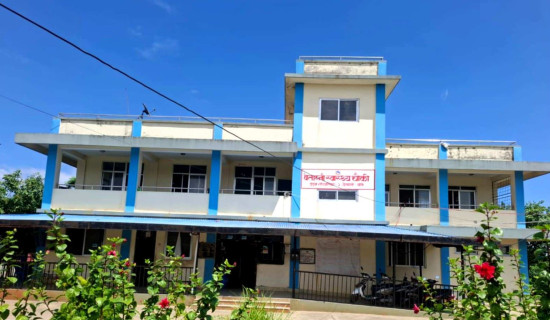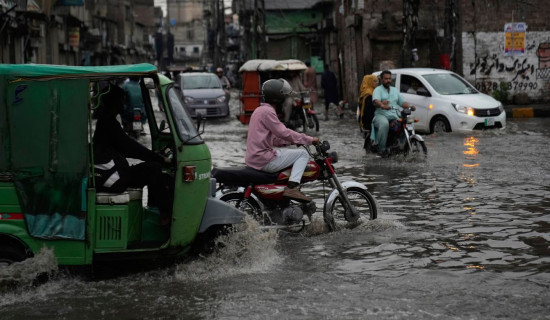- Wednesday, 2 July 2025
Birds And Bio-diversity
Nepal, a country rich in biodiversity, provides sanctuary for many migratory bird species. Small yet ecologically varied, this country provides a crucial stopover sites for various migratory birds from Siberia, Turkmenistan, Kyrgyzstan, China and Mongolia to escape the harsh winter there and hatch their fledglings. The presence of these birds boosts Nepal's ecological diversity and attracts significant numbers of tourists, and the country can generate substantial revenue by developing and promoting bird watching and giving a retreat to bird enthusiasts, researchers and conservationists.
If Nepal can mark itself as a prime destination for migratory birds from across the world, it would be able to attract funds from national and international organisations and boost its conservation endeavours. The local communities can be employed in habitat preservation and restoration projects which create job opportunities and help local people become self-reliant. The White-cheeked Starling, has been documented as the latest new bird species in Nepal. This bird was spotted and recorded in the lower Mustang region of the Annapurna Conservation Area, which is known as Fusre Chara in Nepali.
Before the discovery of White-cheeked Starling as the 895th bird in Nepal’s record, the Eurasian Roller was also recorded for the first time in September 2021 in the upper Mustang region. Baikal Teal, a rare migratory bird and a native to Siberia, was spotted near Narayani River this year. The recent census of migrant water birds shows a rise in their numbers, which makes bird enthusiasts conservationists hopeful and excited. Habitat loss due to deforestation and loss of wetlands, anthropogenic activities, air and water pollution and changing weather patterns has posed substantial risk for the bird species found in Nepal. So proper conservation efforts are called for.
Though relatively small in geographical size, Nepal's rich bird diversity offers significant opportunities for educational tourism and research. The country can be promoted as one of the best destinations for the study of birds. In this regard, Koshi Tappu stands as one of the famed bird sanctuaries in Asia. Nature lovers from around the world are eager to visit Nepal for nature walk and bird watching. But we need to take the trend of habitat degradation seriously. The focus should be on the conservation of wetlands which are the prime habitat for most of the migratory birds. Good conservation track record eventually helps in attracting tourists interested in exploring rich diversity of animal and bird species in Nepal.
Migratory birds are not just seasonal visitors to Nepal but are key players in our ecological and economic landscape. The presence of these birds are crucial for eco-tourism, conservation efforts, educational opportunities, and promotion of tourism business. The mutual relationship between migratory birds and the Nepali economy highlights the importance of conserving these wonders of nature and giving them the environment in which they can thrive and multiply. Through strategic planning and community involvement, Nepal can continue to thrive as a haven for both birds and bird lovers in the world map.
Migratory birds visit Nepal during autumn and spring. The autumn migration, occurring from September to November, sees birds fleeing the harsh winters of the northern hemisphere. However, the spring migration, lasting from February to April, involves birds returning to their breeding grounds after wintering in more temperate regions. Working for habitat protection, formulating legal frameworks, reducing the use of pesticides, controlling anthropogenic activities, strengthening community engagement, educating people about bird conservation and international cooperation are important for the conservation for the migratory birds which are vital assets for eco-tourism and enhanced bio-diversity status.

















